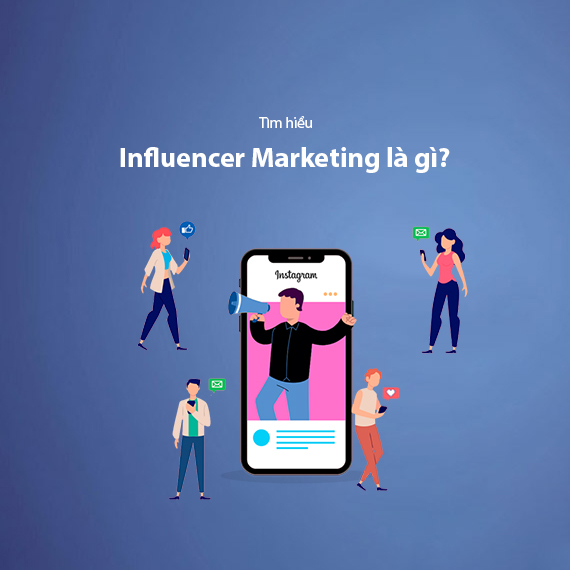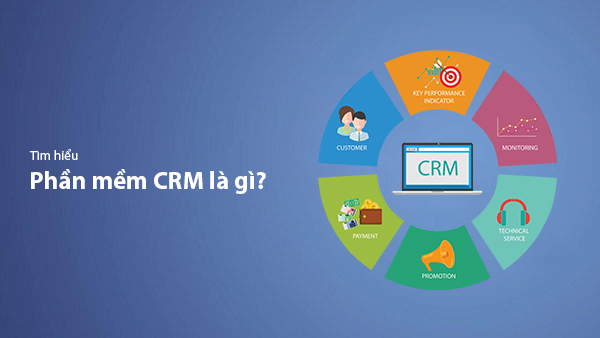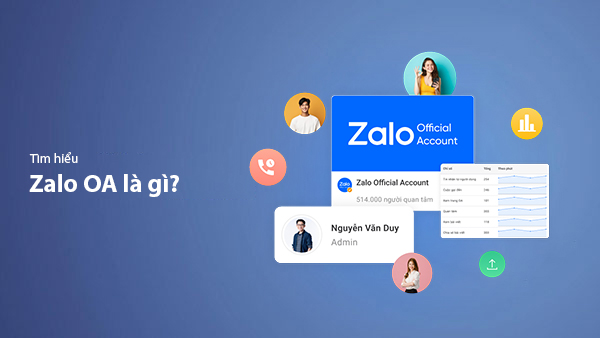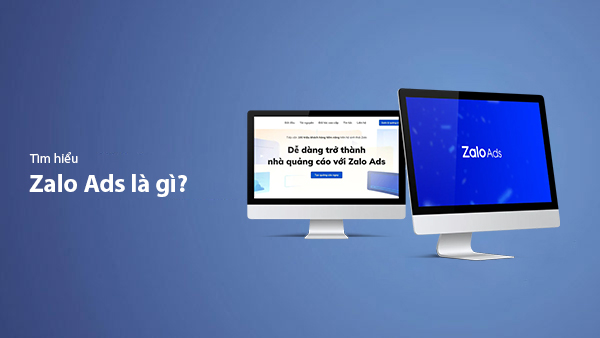What is Influencer Marketing? Everything You Need to Know
- Published on

- What is Influencer Marketing?
- Why is Influencer Marketing a Trend?
- Types of Influencers in Marketing
- Mega Influencers
- Macro Influencers
- Micro Influencers
- Nano Influencers
- Influencer Marketing vs. Other Marketing Methods
- Influencer Marketing vs. Word of Mouth Marketing
- Influencer Marketing vs. Affiliate Marketing
- 6 Steps to an Effective Influencer Marketing Campaign
- Set Clear Objectives
- Identifying Your Target Audience
- Building Consistent Messaging
- Planning the Budget
- Finding and Partnering with Influencers
- Monitoring and Evaluating Campaign Performance
- Case Studies: Successful Influencer Marketing Campaigns
- Daniel Wellington (DW)
- Glossier’s Nano Influencer Strategy
- Netflix’s “Stranger Things” Campaign
- Samsung Galaxy Fold Launch
- Common Mistakes in Implementing Influencer Marketing
- Choosing the Wrong Influencer
- Failing to Set Clear Expectations
- Not Tracking and Evaluating Performance
- Over-reliance on a Single Influencer
- Ignoring Content Authenticity
- The Future of Influencer Marketing: Trends and Opportunities
- The Rise of AI and Virtual Influencers
- Increased Use of Micro and Nano Influencers
- Integration with the Metaverse
- Leveraging Big Data to Optimize Campaigns
- Focus on Sustainable and Meaningful Content
- Conclusion: Optimizing Influencer Marketing for the Future
- Tips for Businesses
- Ready to Apply Influencer Marketing to Your Strategy?
What is Influencer Marketing?
In a world where technology and social media are evolving rapidly, traditional marketing methods are losing their effectiveness, making way for newer, more innovative strategies. Among these, Influencer Marketing has quickly become an essential tool, enabling brands to connect with customers naturally and convincingly. So, what is Influencer Marketing? How powerful is this strategy in building brand recognition and driving revenue growth?
Influencer Marketing is a marketing strategy in which businesses collaborate with individuals who have significant influence on social media or within their communities to convey the brand's message and values. Instead of direct advertising, companies leverage the trust and close connection between Influencers and their followers to inspire trust and encourage action from potential customers. According to Statista, the global Influencer Marketing market exceeded $15 billion in 2022, underscoring its robust growth and immense potential.
Why is Influencer Marketing a Trend?
Several factors make Influencer Marketing one of the most crucial tools in modern marketing:
- Consumer Trust: Today's consumers tend to trust recommendations from Influencers they follow more than direct advertising from brands, making this strategy both natural and effective.
- Cost Optimization: Compared to traditional advertising campaigns, collaborating with Influencers—especially Micro or Nano Influencers—offers lower costs and higher ROI.
- Targeted Reach: Influencers often have a specific audience, enabling businesses to easily target the right demographics.
Did you know? Influencer Marketing isn't exclusive to large brands; small businesses can also leverage it effectively.
By utilizing Influencer Marketing, brands not only enhance their visibility but also strengthen customer loyalty. In the next section, we'll explore the types of Influencers and how to select the right one for your campaign.
Types of Influencers in Marketing
To execute an effective Influencer Marketing campaign, understanding and categorizing Influencers is essential. Based on their follower count, engagement rate, and field of influence, Influencers can be divided into four main categories: Mega Influencers, Macro Influencers, Micro Influencers, and Nano Influencers. Each type has unique characteristics and benefits suited to different business goals.
Mega Influencers
Mega Influencers are individuals with over 1 million followers on social media platforms. They are typically celebrities like actors, singers, models, or athletes with widespread appeal. Their influence spans multiple fields, reaching diverse audiences.
- Advantages:
- Ability to generate global brand awareness.
- Professional, consistent messaging supported by a dedicated management team.
- Disadvantages:
- Extremely high collaboration costs.
- Lower engagement rates compared to smaller Influencers.
Example: After the success of "Squid Game," Jung Ho Yeon, the lead actress, became the face of several international brands, leveraging her tens of millions of Instagram followers.
Macro Influencers
Macro Influencers typically have between 100,000 and 1 million followers. They are often experts in specific fields or independent content creators. Unlike Mega Influencers, their fame usually stems from building their personal brand through blogs, vlogs, or high-quality content on social media.
- Advantages:
- Ability to quickly reach a targeted audience due to their credibility.
- Ideal for campaigns targeting niche markets or aiming to increase engagement.
- Disadvantages:
- Collaboration costs are still moderately high.
- Best suited for mid-sized campaigns rather than large-scale ones.
Micro Influencers
With a follower count ranging from 10,000 to 100,000, Micro Influencers are a popular choice for small and medium-sized businesses. They stand out in specific niches like fashion, beauty, or cooking, and often achieve significantly higher engagement rates than larger Influencers.
- Advantages:
- High engagement rates: Micro Influencers often interact directly with followers via comments and messages.
- Lower collaboration costs compared to Mega or Macro Influencers.
- Content tends to be more authentic and relatable, as they manage their accounts personally.
Nano Influencers
Nano Influencers have smaller followings, between 1,000 and 10,000, but boast highly loyal and engaged audiences. They often operate in small communities or niche markets, such as gardening clubs, book groups, or parenting forums.
- Advantages:
- Personal connection: They engage directly with followers through daily interactions.
- Affordable costs: Partnerships often involve minimal fees or product-only compensation.
- Ideal for small businesses: Highly effective for product testing or entering niche markets.
- Disadvantages:
- Limited reach compared to larger Influencers.
Influencer Marketing vs. Other Marketing Methods
While exploring Influencer Marketing, it’s easy to confuse it with other strategies like Word of Mouth Marketing, Affiliate Marketing, or Advocate Marketing. Although they share similarities, each approach has distinct characteristics and methods. Understanding these differences helps businesses select the most appropriate strategy.
Influencer Marketing vs. Word of Mouth Marketing
Word of Mouth Marketing encourages customers to voluntarily share their experiences with your product or service. This often happens naturally when customers are satisfied and want to spread the word.
- Key Difference:
- Influencer Marketing focuses on paid partnerships with Influencers to promote products.
- Word of Mouth Marketing relies on organic, unpaid recommendations from customers.
Example: A paid Instagram post promoting skincare products by an Influencer is Influencer Marketing. However, when their followers share their own experiences with the product, it becomes Word of Mouth Marketing.
Influencer Marketing vs. Affiliate Marketing
Affiliate Marketing compensates Influencers based on specific actions, such as purchases made through a unique link or discount code they provide.
- Key Difference:
- Influencer Marketing pays for campaign participation or content creation, regardless of sales.
- Affiliate Marketing pays only when measurable results (e.g., purchases, downloads) are achieved.
6 Steps to an Effective Influencer Marketing Campaign
Success in Influencer Marketing requires a clear strategy and specific execution steps. Below are the 6 critical steps to building and executing an effective campaign, from setting goals to measuring results.
Set Clear Objectives
Objectives are the foundation of any campaign. To ensure a focused and achievable strategy, follow the SMART criteria:
- Specific: Clearly defined and detailed.
- Measurable: Quantifiable with metrics.
- Attainable: Feasible with available resources.
- Relevant: Aligned with the brand's direction.
- Time-bound: Accompanied by a clear deadline.
Identifying Your Target Audience
An Influencer Marketing campaign is only effective when it targets the right audience. Success is not about reaching as many people as possible; it’s about engaging those who are genuinely interested in and need your products or services.
- Understand customer insights: Preferences, age, and shopping behavior.
- Choose the right platform: For instance, Instagram for fashion, YouTube for technology, or TikTok for younger demographics.
Building Consistent Messaging
Messaging is the heart of any campaign. Ensure that the content shared by Influencers is not only engaging but also aligns with your brand’s tone and values.
- Define your core message: What do you want customers to remember about your product or service?
- Allow for creativity: Let Influencers personalize the message to make it more authentic and appealing.
Planning the Budget
The budget includes not only fees for Influencers but also additional costs like content production, advertising, and performance measurement.
- Average costs to consider:
- Instagram: $10 per 1,000 followers.
- YouTube: $20 per 1,000 subscribers.
- Blogs: $60 per 1,000 visitors.
- Quality over quantity: A Micro Influencer with high engagement rates may deliver better results than a Mega Influencer.
Finding and Partnering with Influencers
Choosing the right Influencer is crucial to the success of your campaign. Start by using analytical tools to find the best fit:
- BuzzSumo: Discover Influencers based on their content.
- HypeAuditor: Analyze engagement rates and follower quality.
- Upfluence: Suggests Influencers by industry.
Pro Tip: Carefully evaluate metrics like Engagement Rate (ER), follower quality, and the Influencer’s credibility before making a decision.
Monitoring and Evaluating Campaign Performance
To maximize ROI, closely monitor your campaign’s performance using tools like Google Analytics or specialized platforms such as SEMrush. Key metrics include:
- Reach: The number of people exposed to the content.
- Engagement: Likes, comments, shares, and interactions.
- Conversions: Purchases or specific actions taken by customers.
- ROI (Return on Investment): Compare campaign costs with revenue generated.
Case Studies: Successful Influencer Marketing Campaigns
To understand how Influencer Marketing works in practice, let’s look at some successful campaigns where brands effectively leveraged Influencers to achieve communication and revenue goals.
Daniel Wellington (DW)
The famous watch brand Daniel Wellington is recognized as one of the pioneers in using Influencer Marketing strategically and creatively. Instead of partnering with A-list celebrities, DW collaborated with thousands of Micro Influencers worldwide. Each Influencer received a free watch and an exclusive discount code to share with their followers.
- Results:
- A significant increase in brand awareness, especially among younger audiences.
- Rapid revenue growth, transforming DW from an unknown brand into a multimillion-dollar company.
- Takeaways:
- Micro Influencers can effectively reach targeted customer groups at reasonable costs.
- Personalized discount codes drive purchase behavior.
Glossier’s Nano Influencer Strategy
The beauty brand Glossier built a loyal customer base by partnering with Nano Influencers and Advocates. Instead of relying on traditional advertising, Glossier encouraged existing customers to share authentic reviews on social media.
- Results:
- Higher engagement rates than traditional campaigns.
- A 600% increase in revenue within the first year of implementing this strategy.
- Takeaways:
- Authentic content from Nano Influencers fosters deeper connections with audiences.
- Combining Influencers with customer advocacy boosts both brand awareness and loyalty.
Netflix’s “Stranger Things” Campaign
For the launch of a new season of Stranger Things, Netflix collaborated with Mega Influencers and Macro Influencers to generate buzz on social media. The campaign integrated merchandise promotions with creative posts about the show, creating a viral phenomenon.
- Results:
- Millions of interactions across platforms like Instagram and TikTok.
- A surge in new Netflix subscribers during the campaign period.
- Takeaways:
- For entertainment products, Mega Influencers can create massive reach.
- Unique, creative content is key to engaging audiences.
Samsung Galaxy Fold Launch
Samsung collaborated with top tech Influencers to promote its foldable Galaxy Fold smartphone. The campaign focused on video content on YouTube, showcasing real-life user experiences with the product.
- Results:
- Millions of views on YouTube, sparking curiosity and anticipation among consumers.
- Significant sales growth after the campaign ended.
- Takeaways:
- Partnering with niche tech Influencers builds credibility.
- High-quality video content showcasing real experiences captivates audiences.
The above case studies demonstrate the power of Influencer Marketing and how selecting the right Influencers and strategies can yield remarkable results. In the next section, we’ll discuss common pitfalls to avoid when running an Influencer Marketing campaign.
Common Mistakes in Implementing Influencer Marketing
While Influencer Marketing is a powerful tool, poor execution can result in wasted budgets, reduced campaign effectiveness, and even negative impacts on brand image. Below are common pitfalls businesses should avoid to ensure a successful campaign.
Choosing the Wrong Influencer
One of the biggest mistakes is selecting Influencers who are not aligned with the brand or its target audience. Many businesses are drawn to large follower counts, forgetting that audience relevance and alignment with brand values are far more critical.
- Consequences:
- The message fails to resonate with the target audience.
- Budget is wasted on Influencers who deliver low conversion rates.
- Solutions:
- Research key metrics like Engagement Rate, content quality, and follower demographics.
- Use tools like BuzzSumo or HypeAuditor to conduct thorough analyses.
Failing to Set Clear Expectations
Not establishing clear goals and expectations from the outset can lead to a lack of direction. This often results in Influencers misunderstanding their roles, which ultimately reduces campaign effectiveness.
- Consequences:
- Content may lack cohesion or fail to capture audience interest.
- Difficulty measuring results and evaluating ROI.
- Solutions:
- Set specific goals such as increasing brand awareness, boosting sales, or driving website traffic.
- Provide Influencers with clear guidelines, including content requirements and key messaging.
Not Tracking and Evaluating Performance
Many businesses focus on campaign execution but neglect tracking and evaluating results. Without concrete data, it’s impossible to determine if the campaign was truly successful.
- Consequences:
- Missed opportunities for improvement in future campaigns.
- Inefficient use of time and resources.
- Solutions:
- Leverage tools like Google Analytics, SEMrush, or tracking codes to monitor traffic and conversions.
- Regularly analyze metrics such as Reach, Engagement, and Conversions throughout the campaign.
Over-reliance on a Single Influencer
Another common mistake is investing the entire budget in a single Influencer. This creates significant risks if the Influencer fails to deliver or if their content underperforms.
- Consequences:
- High risk if the Influencer’s content does not meet expectations.
- Limited ability to reach diverse customer segments.
- Solutions:
- Diversify by partnering with a mix of Micro, Macro, and Nano Influencers to optimize costs and broaden reach.
Ignoring Content Authenticity
Overly commercialized or scripted content that doesn’t align with the Influencer’s personal style can make audiences skeptical. This directly impacts trust in both the Influencer and the brand.
- Consequences:
- Low engagement rates, reducing campaign impact.
- Potential harm to brand reputation.
- Solutions:
- Encourage Influencers to create content that reflects their personal style.
- Ensure content provides value or entertainment rather than being purely promotional.
The Future of Influencer Marketing: Trends and Opportunities
With continuous advancements in technology and consumer behavior, Influencer Marketing is evolving to meet market demands. Below are key trends shaping the future of this strategy and the opportunities they present for businesses.
The Rise of AI and Virtual Influencers
In recent years, Virtual Influencers—digital personas created by artificial intelligence (AI)—have gained significant attention. For example, Lil Miquela, a Virtual Influencer with millions of Instagram followers, has collaborated with major brands like Prada and Calvin Klein.
- Why it’s growing:
- Virtual Influencers are free from personal scandals, ensuring professionalism and consistency.
- They allow full content control, enabling unique and creative campaigns.
- Opportunities for businesses:
- Explore fresh advertising formats appealing to tech-savvy younger audiences.
- Reduce risks associated with real-world Influencers, such as controversial statements.
Increased Use of Micro and Nano Influencers
The emphasis on Micro and Nano Influencers is growing due to their high efficiency and lower costs compared to Mega Influencers. These Influencers maintain close connections with their audiences, resulting in higher engagement rates.
- Predictions:
- Businesses will allocate more budgets to these Influencers to effectively reach specific customer segments.
- Long-term partnerships with smaller Influencers will become the norm, replacing short-term campaigns.
Integration with the Metaverse
As the Metaverse becomes a global phenomenon, Influencer Marketing is poised to expand into this virtual space. Brands can collaborate with Influencers to host virtual events, showcase products, or create exclusive experiences in the Metaverse.
- Benefits:
- Strengthen connections with younger audiences, especially Gen Z.
- Explore new advertising formats, such as NFTs (Non-Fungible Tokens) and digital products.
Leveraging Big Data to Optimize Campaigns
Big Data will play a crucial role in helping businesses identify the right Influencers and measure campaign effectiveness. By analyzing user behavior data, companies can craft highly personalized strategies.
- Practical applications:
- Identify the most suitable Influencers based on customer preferences and behaviors.
- Accurately measure ROI, enabling more efficient budget allocation.
Focus on Sustainable and Meaningful Content
Modern consumers are increasingly interested in social and environmental issues. Influencers who promote sustainability, cultural diversity, and community values will wield greater influence.
- Opportunities:
- Collaborate with Influencers advocating for social causes to enhance brand image.
- Develop campaigns that not only promote products but also deliver long-term value to communities.
Conclusion: Optimizing Influencer Marketing for the Future
Influencer Marketing is no longer just a trend—it has become a cornerstone strategy in modern marketing. With its ability to target the right audience, build consumer trust, and make a significant impact on brand recognition, this approach outperforms many traditional methods. However, success requires businesses to focus on key elements:
- Choosing the right Influencers: Ensure alignment with your brand’s values and target audience.
- Developing clear strategies: From goal setting to performance evaluation, every step needs thorough planning.
- Staying ahead of trends: Embrace new technologies like AI, Big Data, and the Metaverse to unlock potential opportunities.
Tips for Businesses
- Invest in Micro and Nano Influencers to optimize budgets and build stronger connections with customers.
- Focus on authentic content: Avoid generic advertising and encourage Influencers to convey messages in their unique voice.
- Utilize modern analytics tools to ensure campaigns achieve the best ROI.
Ready to Apply Influencer Marketing to Your Strategy?
The marketing landscape is evolving daily, and Influencer Marketing is an opportunity you can’t afford to miss. Start by analyzing your business needs, selecting the right Influencers, and creating content that truly resonates with your audience. The future of your brand begins with the campaigns you launch today.
If you need further guidance or support, contact us now for tailored strategy advice!
Latest Posts

Lesson 26. How to Use break, continue, and return in Java | Learn Java Basics
A guide on how to use break, continue, and return statements in Java to control loops and program execution flow effectively.

Lesson 25. The do-while Loop in Java | Learn Basic Java
A detailed guide on the do-while loop in Java, including syntax, usage, examples, and comparison with the while loop.

Lesson 24. How to Convert Decimal to Binary in Java | Learn Basic Java
A guide on how to convert numbers from the decimal system to the binary system in Java using different methods, with illustrative examples.

Lesson 23. How to Use the While Loop in Java | Learn Java Basics
Learn how to use the while loop in Java with syntax, real-world examples, and practical applications in Java programming.
Related Posts

What is CRM Software? Top 15+ Best Customer Relationship Management Software
Discover the definition of CRM software, its role in customer relationship management, and a list of 15+ top CRM solutions to help businesses enhance customer service performance and achieve sustainable growth.

What Is Local Guide? Benefits of Becoming a Local Guide on Google Maps
Local Guide is a community program by Google Maps where users can contribute reviews, photos, and location information to improve map data. This article explains what Local Guide is and the benefits of being an active member.

What is Zalo OA? A Detailed Guide to Creating Zalo Official Account for Businesses
Zalo Official Account (Zalo OA) is a crucial tool that helps businesses connect with customers and optimize their online business operations. This article provides a step-by-step guide on how to create a Zalo OA from A to Z.

What is Zalo Ads? A Guide to Running Effective Zalo Ads
Discover what Zalo Ads are and learn how to run effective Zalo advertising campaigns to reach customers and boost sales in the digital era.

